The correct title of this post should be “strength training”, but that sounds less exciting, right? Lifting weights, aka strength or resistance training is when you move heavy metals against gravity to grow muscle over time to increase your physical strength. Fun fact: Weightlifting is a competitive sport, with the 2 main lifts you see on TV during olympics
I started out around my 40th birthday and my goals broadly was to get fitter and build a great foundation of strength to keep my lifestyle and hobbies going for the next forty years.
I got three tips when starting out. They 200% worked for me. I thought they would helpful to others as well so I’ll share them below and explain how I worked with each of them in my first months.

Tip 1: Let your objectives guide your program.
“You need a program. What are you trying to achieve?”
Such a hard question!
I don’t need to lose weight. I am not going to compete in a bodybuilding or weightlifting competition soon. I’m not heading to the Himalayas.
Should I focus on lower body strength, because my yoga workout already gives me a lot of upper body strength – or might that create imbalances?
I landed at “be stronger, leaner, fitter, and healthier”. How my body would feel climbing a certain mountain or staircare. How my lower back will feel in a few years from now. How my knees feel walking down a steep hill. That I might one day be able to lift up my heavy motorcycle if it falls. Nicely shaped arms and legs. And if the exercise could over time heal my cardiovascular system and help manage my blood pressure that would simply be epic!
Coach Rob (Women Who Lift Weights) on his podcast suggests to set goals for both, the process and the outcome. Interesting, right?
Process goals could be a heavy lifting session at least 10 times a month, or doing squats every single week, or always warming up for 15 minutes before starting the workout, or not giving a damn about who sees you sweat.
An outcome goal could be an ability to do your first pull-up, or reducing belly circumference by 5cm, or being able to jump up on a 1m high box without using your hands.
I would take this a bit further and suggest setting outcome goals in 3 areas: health (what changes will you notice in your health?), lifestyle (what changes will you observe in your ability to use your body?), and aesthetics (what changes will you see?). The more measurable the better!
So what is a program? It is a plan towards your goals, something that tells you what exercise you do on which day. Basically it should answer questions like: How many days will you lift weights? Which muscles will you work on which day and using which exercises? How intense will the workout be? How many repetitions do you do per exercise? What other exercise or workouts or movements will you do besides lifting weights?
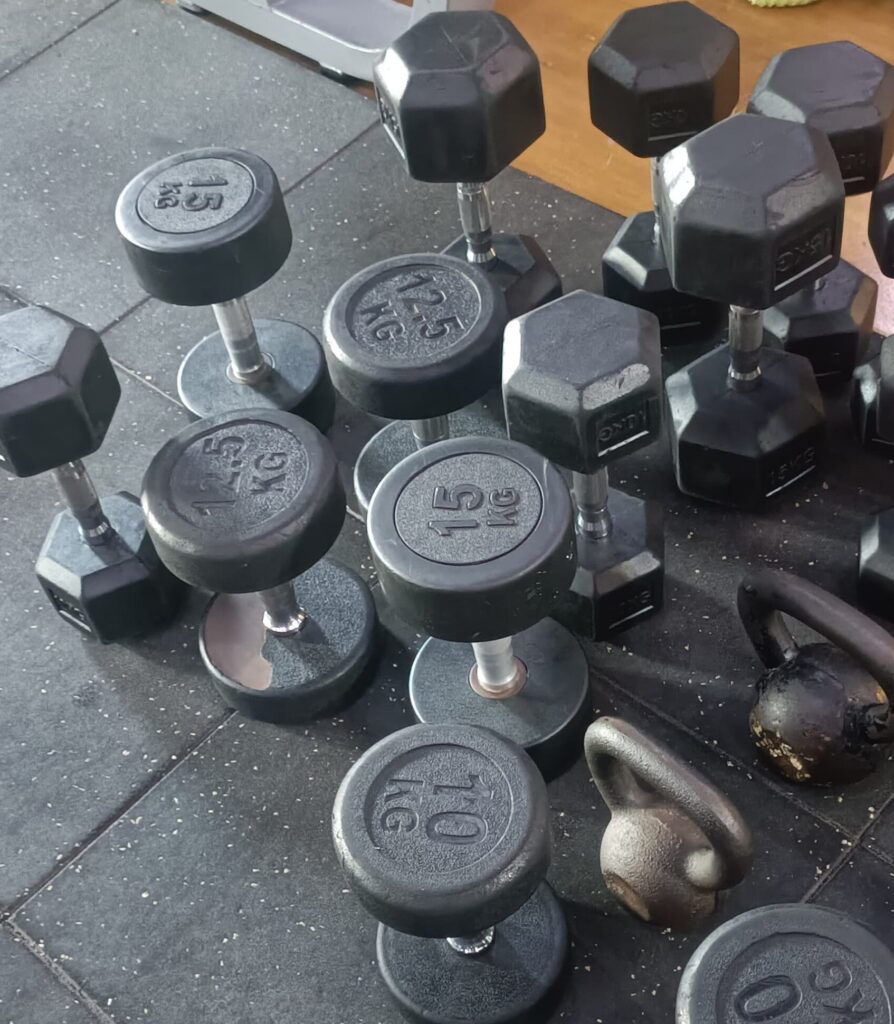
Whatever program you go with, three aspects are key:
- Consistency. Working out one week a month won’t get the results, and could lead to frustration or even injury. To grow muscle you need to work them regularly over an extended period of time. Also other important supportive tissues like tendons, ligaments and fascia will be strengthened slowly and over time. Designing a plan you can do consistently is the most important.
- Progressive Overload. This is a fancy way of saying that you will increase the difficulty of an exercise as you get stronger. Difficulty could mean chosing a heavier weight, doing more repetitions or moving the weight more slowly, hence increasing time the muscle is under tension. So if you do 8 repetitions (reps) of a certain exercise with 5kg weights today, maybe next time you will do 9 or 10 reps. And the week after you might try to lift 7kgs, but maybe only manage 6 reps. Until one day you lift 100kgs. Or not, but you get the idea.
- Recovery. If you work the same muscle heavily seven days a week, when is it going to regenerate and grow? Muscles take 48-72 hours to recover from intense strength training. If the idea is to overwork the muscle to break it, so it regrows stronger and bigger, you need to rest the muscles.
My good friend and gym role model suggested a 3-day split: Back Day, Leg Day, Shoulder/Chest/Arms Day. You basically split the body into 3 parts in a way that minimizes overlap in muscle activation, promoting better recovery and muscle growth. There is a lot of info online about a closely related approach called Pull-Push-Legs.
I dove right in and have been using it with a few variations for nearly two years now! I love that I go to the gym only 3 days a week, having other days for my yoga, forest walks, and my weekends for trips and fun. (I’ll share more info on the program and how I’ve kept it interesting for almost two years in an upcoming post).
I later realized that most gyms put people who start out (especially women) on full body workouts, focusing more in the cardio (many reps, little weight) and encourage 4-5 sessions a week. I’m glad I wasn’t victim to that, as it could have discouraged me, and didn’t fit my goals.
If you have more complex goals or previous injury, you could develop a personalized program with a personal coach based on your objectives.
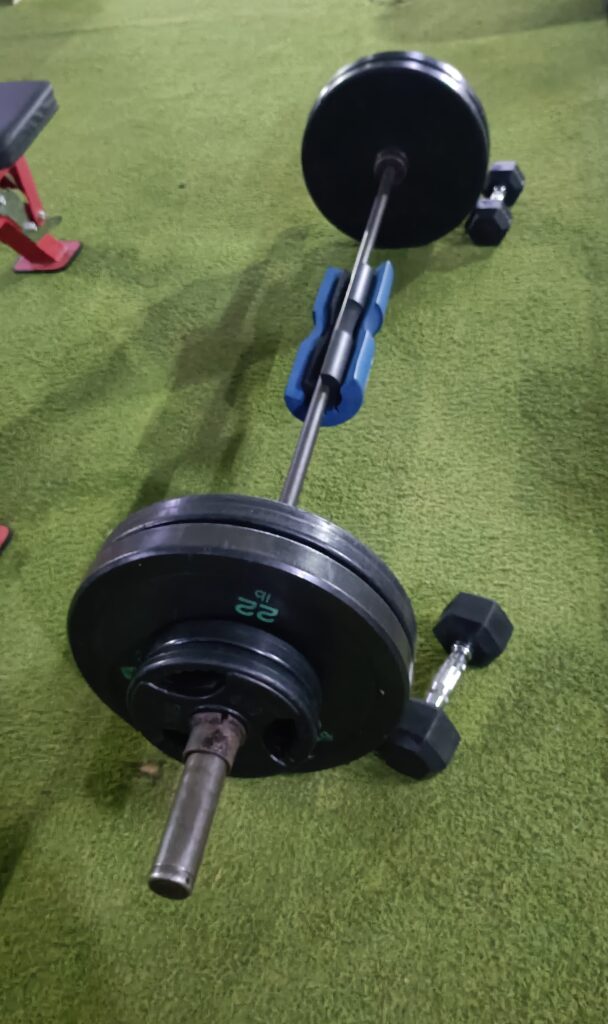
Tip 2) Eat for Fuel
The second tip I got was to look into my diet. I was eating relatively clean already, minimizing refined sugar, processed or fried foods, white/empty carbs, prioritizing unsaturated over saturated fat, loading up on veggies, etc.
But to build muscle, I would need to up my protein I was told.
Heads-Up: I am not a nutritionist, so please do your own research. Also, esp for women our hormones and where we are in our monthly cycle and life cycle plays a role in this.
But I worked with a few basic principles:
- Heavy workouts need fuel (=carbs).
- You can’t turn fat into muscle. Those are two different things: Reducing fat and building muscle. That consequently means doing lots of abs workouts without getting food intake right will not burn belly fat.
- Muscle is made of protein. If I want to build muscle, I need to eat protein. There’s more to it: Different amino acids come through different food, some more important for muscle building. Different guidelines recommend 1g or 2g protein intake per kg bodyweight. So I aimed for around 60-90 grams of protein every day!
- Having more muscle means using more calories, even when I’m sitting on my desk. In addition, regular heavy workouts raise your metabolism. In my first months, I was always hungry.
- Consistently taking in more calories than I use will make me weight. On the flipside, eating at calory maintenance level or in a slight calorific deficit will over time lead to weight loss – and if I eat enough protein and work out heavy, then this loss will be fat, while muscle is maintained and built. Voilá: Lean Body Shape!
Does this mean counting calories now? Maybe, depending on your goals. Personally, I calculated my need for the 3 macronutrients (carbs, protein, fat) with this online calculator purely for curiosity, but I never actually ended up weighing food or counting calories.
I simply prioritize protein in every meal, shopping more chicken breast, chick peas, tuna and their cousins – and reduced liquid empty carbs like iced caramel lattes and juices. Turns out that ordering water in restaurants saves money too! 🙂
I think it has worked so far!
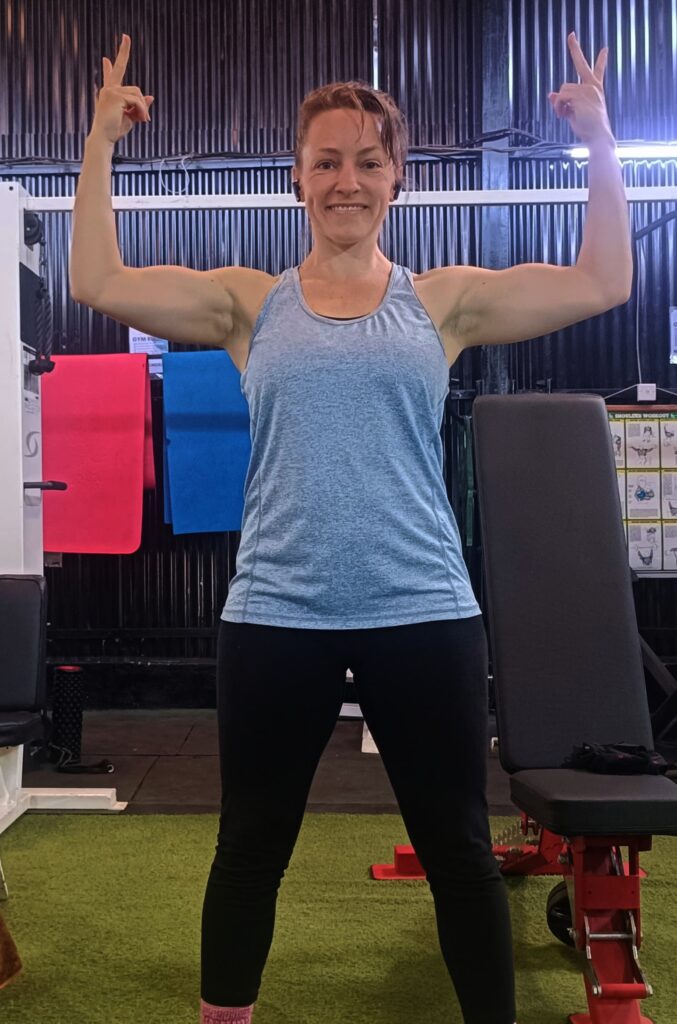
Tip 3: Form is important
Form is about doing the exercise mindfully and putting the intended muscles under tension without abusing or straining other parts of the body.
Here’s an example: If you do push-ups (whether against the wall, on a box or the floor), you are trying to work your chest muscles, triceps, shoulders and core. But if your elbows are at an awkward angle, you might hurt or inflame your shoulders over time.
Another example: If you move dumbbells up and down in front of your body with straight arms, you are trying to work the front of your shoulders, and your traps and sides of your shoulders to some extent as well. Doing a slow, controlled up and down movement will hit those muscles best. Swinging your arms up or dropping them down quickly means you’re reducing the difficulty. (“time under tension”)
Let me tell you: There are 100 different exercises. They have names like Stiffleg Deadlift, Romanian Deadlift, Bulgarian Split Squat, Bent Over Row, Single Leg Hip Thrust and so on.
At first, I was quite confused.
Am I supposed to feel my back or my legs right now? How much should I lean forward exactly? What do you mean, “which part of my back is working!?” 😭
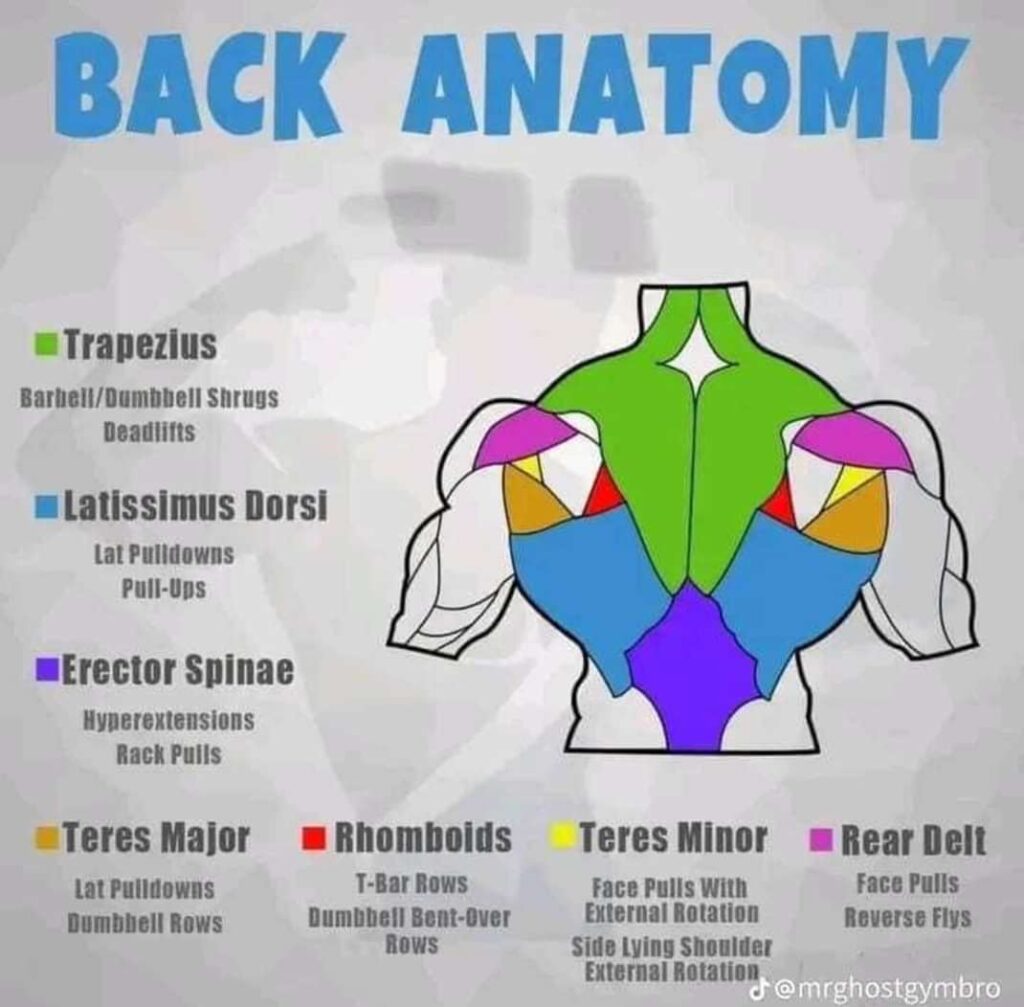
Whether you remember the names or not. (Apps can help, don’t worry! I use Hevy.)
What you should know is which muscle(s) you are training. That allows you to feel into that muscle while performing the exercise to potentially adjust your technique. (“Muscle Mind Connection”)
Otherwise it just becomes mindless moving of weights, which is much less effective but could also create injuries or strain on joints or soft tissue, even in a different body part due to compensation – particularly as you are moving heavy things, not just your body weight.
The good news is that we typically do only around 3 sets of any exercise before moving on to something else. A set tends to have no more than 12 reps, or even 3-5 reps if you chose a very heavy weight.
There is something beautifully geeky about mustering up the concentration to do a perfect squat, one that protects your knees and your back.
Form is why some people take videos of themselves in the gym or perform exercises in front of the mirror. It helps compare with online resources or share with more experienced weight enthusiasts or your coach for feedback.

So these were the tips I got early on.
Hope you found this useful!
Feel free to leave a comment or reach out! Your questions and responses will help me in refining this article and adding more in-depth ones lateron!
PS: Instagram Channels I am finding helpful – by trainers who aim for technique and safety:
There are also YouTube channels with lifting routines like: Caroline Girvan, Sydney Cummings, Lift with Cee.
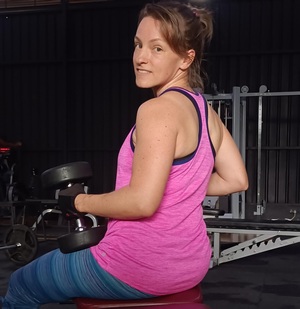
2 replies on “Lifting weights – how I started”
Very good write up 💯 I will adapt this henceforth
This is super informative. Thanks for taking us through your journey.